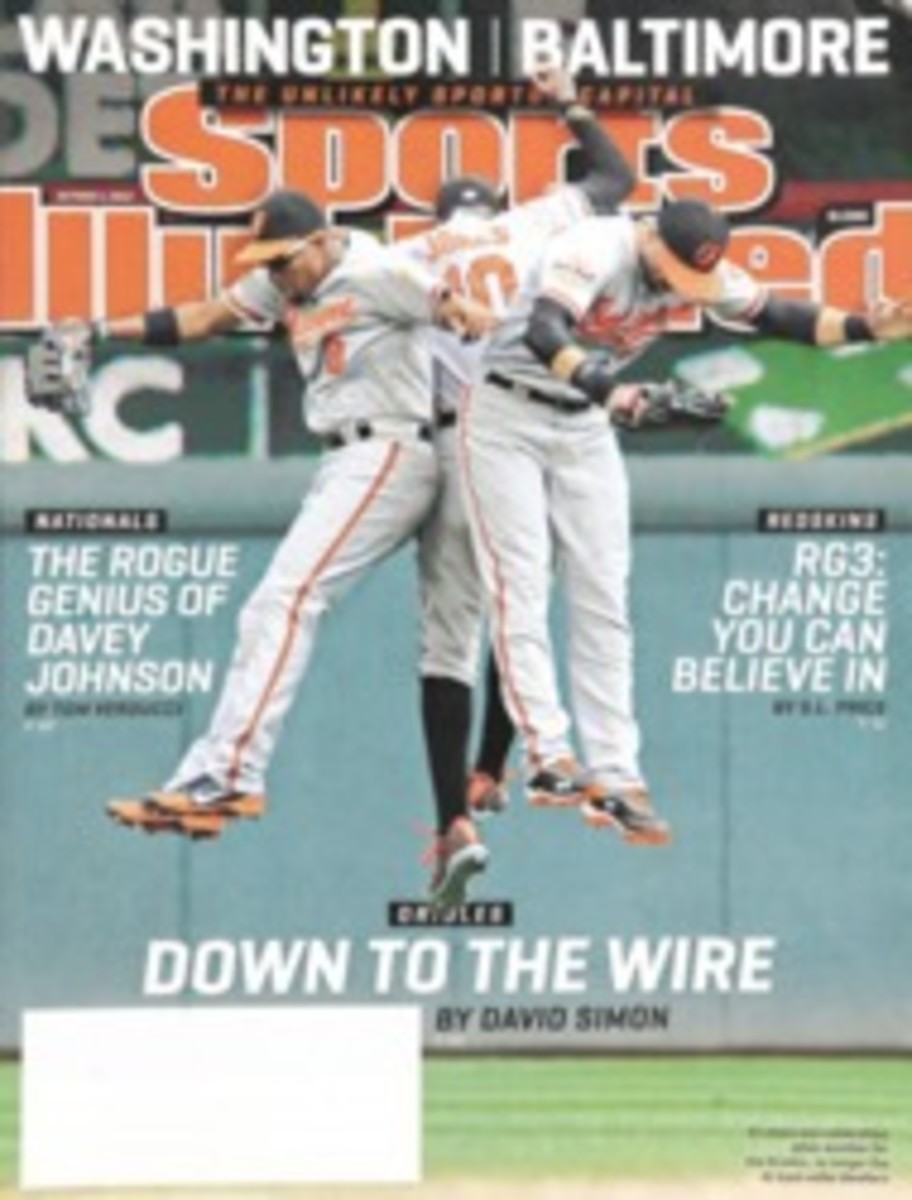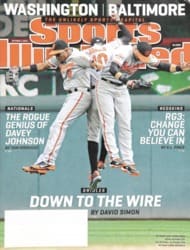
Tape Crusader
In 2011, Jaguars running back Maurice Jones-Drew was at his best over the final three weeks of the season: He had more than 100 rushing yards in each outing, including a season-best 169 against the Colts; and he had 12 carries of 10 yards or more, his best three-game total of the year.
Those performances were impressive not only because they came against defenses that were stacked to stop the run—such has been life alongside now-second-year quarterback Blaine Gabbert—but also because knee and ankle injuries in '11 often meant Jones-Drew was not practicing during the weeks leading up to those games.
Iversonian ideology aside, Jones-Drew's lack of practice (practice?!) raised questions about how he could be so effective on Sundays without taking reps Wednesdays through Saturdays. Jones-Drew, in fact, did not work out on Wednesdays at all in '11, after having undergone off-season knee surgery, and he was rested on Thursdays beginning in late November. Yet he rushed for a career-best and league leading 1,606 yards.
The short answer: game tape.
"I didn't get any physical reps, but I got mental reps," says Jones-Drew, who watched game footage at the Jaguars' practice facility and also at home on his laptop using the website hudl.com and a team-provided password. "It slowed the game for me and allowed me to react faster. If you're not where you're supposed to be as a defender, I know where the hole is going to be before it opens."
We hear so often about players watching tape—an obsolete term, given that they're actually watching digital disks or online streams—but what does it really mean? For young NFL players, often very little. Jones-Drew admits that as a rookie he spent most film sessions gawking at opposing backs instead of observing the tendencies, strengths and weaknesses of his foes.
It wasn't until a few years into his career that he started using scouting cut-ups to his advantage. Filtering through the mind-numbing assortment of information—personnel packages for every situation, including base, short-yardage, goal line, third-down and two-minute defenses—Jones-Drew learned to distill footage into three bite-sized nuggets: How do defenders fit the run? How do they tackle? And how do they cover in passing situations?
Now, by late in any given week, Jones-Drew is viewing his next opponent with microscopic clarity. He starts on Tuesday by watching that team's previous game, to get a feel for the defensive scheme. Then he studies the coordinator's coaching lineage, because typically that person will employ concepts learned from his mentors. Next he breaks down each unit—linemen, linebackers, secondary—to see how it plays in various situations. Last he focuses on each defender.
"I'm going to study those guys so well that I can tell you what kind of underwear they wear on Tuesday," Jones-Drew says. "I want to know them better than they know themselves."
Zeroing in on the Colts' linebackers before the Jaguars' 22--17 win over Indianapolis on Sunday, Jones-Drew observed, "Kavell Conner is going to fit you in the hole; he's going to try to meet you on your side of the line of scrimmage. Jerrell Freeman, on the other hand, he's young; he doesn't know everything. He's going to wait and read [the play]. He's not going to be as aggressive." Jones-Drew ran into the pair often on Sunday (16 times between the two of them) but always after a gain of at least three yards. In the end, his 177 rushing yards (on 28 carries) spoke volumes about the effect of his studies.
For Jones-Drew, the realization of what tape could do for him came late in his rookie season, when a veteran teammate pointed out that Dolphins linebacker Zach Thomas blitzed only when his hands were on his knees. Another time a teammate pointed out that Colts safety Bob Sanders was dropping his head and lunging low for tackles, almost always when he was 2½ yards from a ballcarrier. As a result Jones-Drew knew precisely what was coming from Thomas or when to cut on Sanders downfield.
"When I was younger, there were so many things I didn't pay attention to because I didn't know better," he says. "I would spot a linebacker blitzing, but I never watched how he blitzed—what type of moves he made, whether he liked to go around me or through me. If I'm in the open field, how's he going to tackle me? Is he going to square up or is he going to duck and dive?"
Jones-Drew's studies have been on the mark in 2012. Despite missing all of training camp, he is second in the NFL in rushing, with 314 yards. Don't believe it? Go to the tape.
PHOTO
ANDY LYONS/GETTY IMAGES (JONES-DREW)
INDY FEST After analyzing the tendencies of Conner (53) and the Colts, Jones-Drew sliced them up for 177 rushing yards.
PHOTO
GARY BOGDON (JONES-DREW)
MOVIE NIGHTS As the week progresses, MJD's focus shifts from schemes to units and then to individual defenders.

